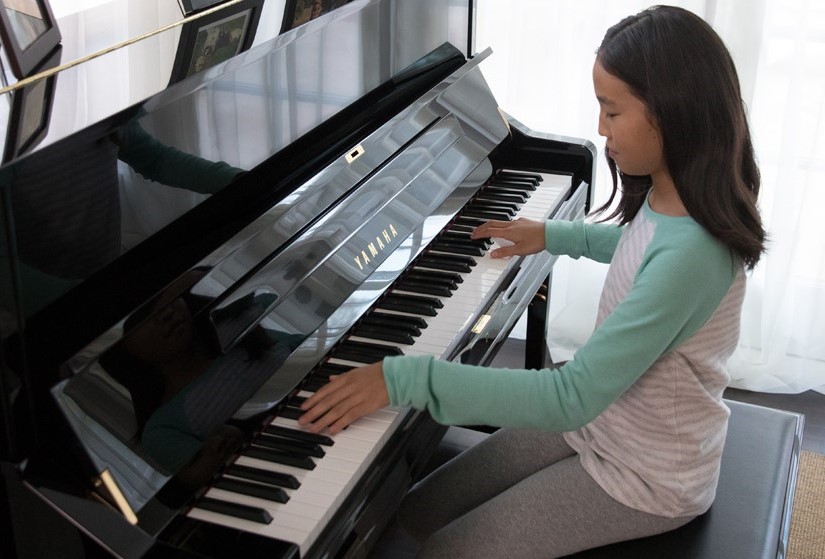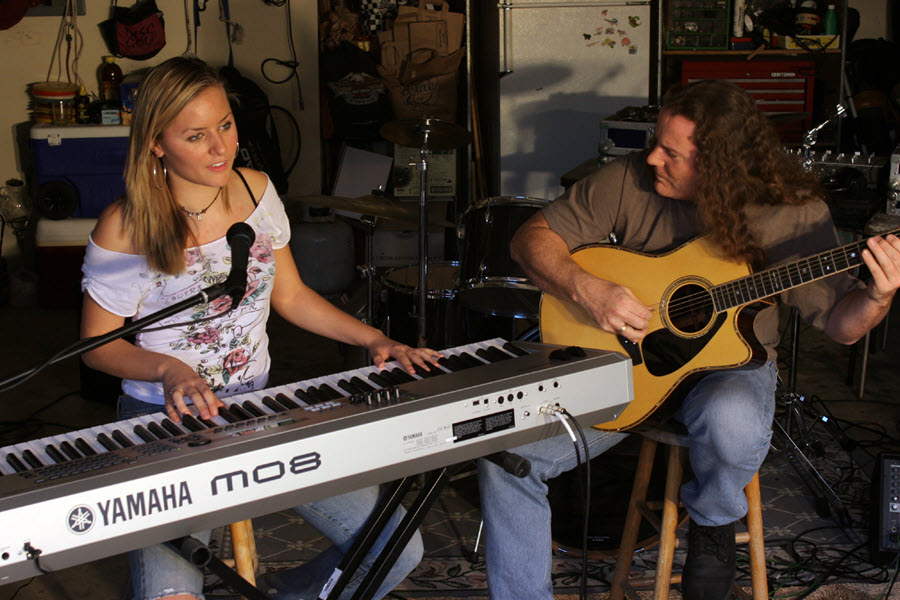Tagged Under:
Five Tips For Playing Rock and Roll Piano
Learn how to play in the style of this classic genre.
Back in the 1950s, a number of seminal pianists developed the core vocabulary that we use to this day for playing rock and roll music. I’m thinking of people like Jerry Lee Lewis, Little Richard and Fats Domino, whose influence can be heard in the songs and performances of artists like Elton John and Dr. John, as well as contemporary musicians like Ben Folds and Jamie Cullen.
In this article, I’ll give you five tips that will help you learn this style of playing.
1. Rely on Repeated Chords
To match the driving rhythm of the rock and roll drumbeat (hi-hat or cymbal playing eighth notes; kick drum on beats one and three; snare on the two and four), pianists would hammer eighth-note repeated chords in the right hand, like this:

Try this foundational exercise slowly at first, using your wrist to slightly pump up and down, then start raising the tempo faster and faster, focusing on keeping your timing precise and unwavering. Pay attention to not tensing up your arm, and be sure to keep your shoulders and neck relaxed as well.
Here’s another example, using a dominant seventh voicing:

When you apply this technique to a chord progression, be sure to use good voice leading, which means moving to the closest notes possible in order to form the new chord, like this:

… or this:

2. Keep Those Figures Moving
Once you’ve mastered the basics, try adding a little melodic movement while still keeping the steady driving rhythm. Here’s one way of doing this:

This figure just alternates between the fifth and the sixth of the chord (G to A), and is a common approach that both guitarists and keyboardists take when playing rock and roll. In the audio clip, I also added a little syncopation by holding the chord in the middle of the second measure for an extra eighth note.
Alternatively, you can play an inverted F chord instead of just moving the top G in the C chord up to A:

As you can hear, I added a little more rhythmic variation, with the syncopation happening between bars 1 and 2, and then moving up to the dominant seventh (the B-flat). There are many ways of tweaking these basic figures, so be sure to experiment.
Instead of just playing constantly repeated chordal figures, you can alternate notes within the chord voicing to make things a little more interesting. The example below is based on the fifth going to the sixth (as in the previous audio clip), but is played in broken chord style, where the notes contained within a chord are played separately, or in small groupings. (An arpeggio is a form of a broken chord.)

Here’s another approach, played in a more straightforward rhythm:

And one more common variation:

3. Add Some Crushed Notes
Technically, a short note preceding the main note you intend to play is called a grace note, but when this is done within a chord or chordal figure, I prefer to use the term crushed note instead, since it seems to quickly get absorbed into the chord that follows.
Crushed notes work really well for rock and roll piano. In the first bar of the example below, the repeated figure is not a full triad, but is instead an octave with the fifth in-between. In the second bar, there’s a quick F-sharp crush note, played by slightly flicking the F-sharp with your second finger just ahead of playing the G chord. In the third bar, the F-sharp is played in place of the G altogether. These kinds of rhythmic additions may be simple, but they add a nice accent that helps put some of the “rock” in rock and roll:

To vary those accents, try playing crush notes in different places. You can also apply this technique to the melodic figures discussed in the last section. In the following example, we flick/crush from E-flat into the E for the C triad chords, and then flick/crush from the F-sharp into the G for the C seventh chord:

The following example combines a grace note approach (in the beginning of each measure) with a more melodic use of the movement in the middle of the bar:

4. Keep the Left-Hand Patterns Simple
Rock and roll piano is characterized by simple left-hand patterns, which contrast nicely with the busier right-hand parts. Here are two of the most common left-hand patterns, using the fifth to sixth figure we discussed earlier:

In the first two bars, strong quarter notes serve to define the basic feel; in the next two bars they are doubled up to eighth notes to give the playing a little more drive.
Here’s a similar approach, with the dominant seventh note added:

You can also choose to play a walking bass line with your left hand, such as this:

Or you can always opt for this extremely popular walking bass part:

It’s worth noting that many rock and roll left-hand patterns first came from the boogie-woogie style of piano-playing; for example:

5. Put Those Hands Together
Once you’ve decided on the patterns you want to use for each of your hands, you can work on putting them together. As with most piano-related exercises, the key is to start out slowly, increasing the tempo only when you’re feeling comfortable. Here are four possible combinations you might try:




Bonus: Some Great Performances To Enjoy
All audio played on a Yamaha P-515
Check out our other Well-Rounded Keyboardist postings.
Click here for more information about Yamaha keyboard instruments.














